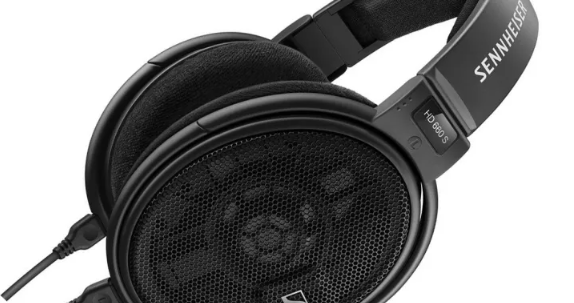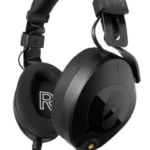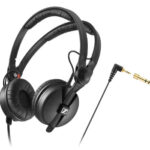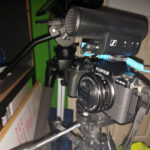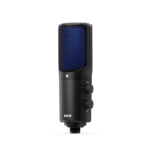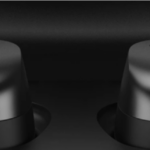by Graeme Hague
When it comes creating great videos some producers get so caught up in the picture quality, the editing, the story-boarding, the camera equipment, the hi-res monitor—all the various components of the visual side of things—that audio doesn’t quite get the same attention. Or perhaps audio isn’t really your thing, and you don’t have the same enthusiasm for getting the audio absolutely perfect. As such, the audio gear in your production suite maybe doesn’t match your video stuff dollar-for-dollar.
Good monitor speakers in particular can be expensive, and to be honest they’re a bit of a waste of money when they’re not coupled with good room acoustics. In fact, just getting somewhere quiet can be difficult enough, away from the family and kids, and that damned television, let alone having good acoustics.
Which is why investing in a professional set of headphones always makes good sense. They provide the isolation, reproduce the necessary audio quality, and double-up as a worthwhile addition to your everyday entertainment needs. It doesn’t get better than listening to high quality music and DVDs than through great headphones.
The term “professional” is crucial here, because it translates into “accurate”. The vast majority of headphones available, including the very high-priced and boutique brands with signature designers, are tailored to shape the music according to personal and popular preferences. I’m talking about things like “extended bass” and enhancements that pretty much try to mimic standing in the middle of a really loud nightclub, but without the overpriced beer. And that’s okay—if that’s what you want.
But it’s not what you want when it comes to mixing and balancing audio for a video. You want the sound to be accurate, a faithful reproduction of exactly what you’ve recorded, so you can make adjustments accordingly.
The Sennheiser HD 660S headphones are the latest member of the much-vaunted 600 Series of headphones. Forever, the industry benchmarks for accuracy in headphones have been the Sennheiser HD600 and HD650, the 600s for over twenty years, so many people might think that, “If ain’t broke, don’t fix it,” adage should apply. What Sennheiser has cleverly done with the 660S is recognise the growing need to cater for lower output devices such as smartphones, tablets, and—yes, prosumer video cameras—while still providing that professional audio accuracy and not messing with a successful design. So while the drop in impedance for the 660S to 150 Ohms (compared to 300 Ohms) isn’t much of a tweak, it’s an important one. These cans are comfortably driven by all manner of portable devices and compact video equipment.
The sound of the HD660S is a really good balance of tone, clarity and volume. Some accurate headphones are simply too much of a good thing—a sort of “flat” reproduction that takes all the fun out of audio. The 660S aren’t coloured, not at all, but offer a good compromise that will properly preview the various listening parameters in today’s devices. In other words, if things sound good in the HD660S, they should sound good everywhere else. The HD600 legacy lives on.
The HD660S are an over-ear design, completely covering your ear and giving good isolation from the outside world, and open-backed. I found the cans a little tight on my head, but I’m sure that’s in anticipation of the foam cups and headband adjusting and adapting slightly over time. The open-back is a catch-22 for some, because—good news—it means you won’t be growing any spuds in your ears during long sessions. However, the greater “bleed” from the headphones might be problematic during recording sessions.
That clarity and audio detail is impressive. They’re the kind of headphones that, if you haven’t experienced it before, make you think, “So that’s what good headphones are all about.” You’ll discover sounds never heard before and, more important from a production point of view, be revealed all the things you don’t want to hear. Time to get busy with that audio editing.
The HD660S comes with two interchangeable 3-metre cables. One has a standard 6.5mm headphone jack, while the other a 3.5mm TRRRS “balanced” jack—something you’ll never use unless you’re into serious hi-fi gear. There’s also a short 6.5mm to 3.5mm adapter for plugging into those portable devices and cameras.
Build quality is fantastic. You’ll own and be using these headphones for a very long time.
Good, professional headphones are worthwhile investment if you’re keen (or not) on mixing the audio of your videos to perfection, but circumstances prevent Abbey Road Studios-like equipment. The HD660S will fit the bill and provide great entertainment too.
AMBEO
Along with the HD660S I got to test out the Sennheiser AMBEO Smart Headset, a set of combined headphones and microphones designed to work with any device equipped with an Apple Lightning Connector and, via a recording app, create “3D” sound recordings along with any inbuilt or installed video recorder.
Simply put, the recordings are a kind of superior reproduction of the world around—or any environment you want to record. Imagine walking through a symphony orchestra and recording in 3D the sounds as you move between the different instruments.
It’s an intriguing concept that’s been around a while, the results are pretty impressive, and it’s being translated into AMBEO soundbars and home stereo equipment as an alternative to surround sound. It’s technology that’s advancing as fast as I can write this info.

What’s really happening is still a stereo recording, but using DSP and software the left/right sound field you’re recording is cleaned up, isolated a little more, cross-talk between channels is eliminated … I could go on and still not scratch the surface, but suffice to say a lot of processing is going on to improve the audio into a sort enhanced reality—not in a false way, but adding clarity and separation to the stereo spectrum.
The applications of sound fields like these are only limited by your imagination. For mine, a downside to the AMBEO headphones is that Lightning connector and associated app/hardware (an iPhone for example).
If you want to use a high-quality camera, you’ll need to sync both vision—iPhone and video camera—and the AMBEO recording into your editing software.

It wouldn’t be the first time someone’s gaffered a Smart phone to their hat. And if I have one criticism, the somewhat short and stiff connector cable got a bit annoying.
Plenty of interesting videos and information on the Sennheiser website .

